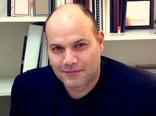Optical Solutions for the Ophthalmic Clinic
Hosted By: Applications of Visual Science Technical Group
31 May 2018 12:00 - 13:00
Eastern Time (US & Canada) (UTC -05:00)This webinar hosted by the OSA Applications of Visual Science Technical Group, will give a detailed overview of advanced optical solutions recently developed at research labs that can make an impact in the day-to-day managing of very common clinical diseases. The webinar will give you an understanding of how cataracts can be classified using optical objective methods to measure stray light, what techniques can be used to improve quality of vision in subjects with age-related macular degeneration and how advanced microscopes can be used to visualize in-vivo retinal diseases and photoreceptors with unprecedented high resolution.
This webinar will feature three leading experts, who will share their knowledge with presentations on:
- "Optics for Cataracts: New Instrument to Objectively Classify Cataracts” by Dr. Harilaos Ginis, Athens Eye Hospital
- "Optics for AMD: Mini Intra-ocular Telescopes to Increase the Optical Quality of the Eye in Patients with AMD" by Prof. Pablo Artal, University of Murcia
- "Optics for Detection and Monitoring of Photoreceptor Diseases: Advanced Microscopes to See the Retina" by Dr. Alfredo Dubra, Stanford University
What You Will Learn:
- You will learn how cataracts can be classified objectively using an instrument to evaluate stray light in the human eye.
- You will learn what kind of Intra-ocular lenses can be implanted in subjects with age-related macular degeneration to increase magnification and optical quality.
- You will learn what type of microscopes can be used to see in-vivo retinal diseases and photoreceptors and how they can be monitorized.
Who Should Attend:
- This webinar is recommended for graduate students and researchers in vision sciences, optics, ophthalmology, and biologists.
- This webinar is recommended for a wider audience of clinicians and practitioners who would like to gain insight into how optical sciences are trying to make an impact in clinical practice.
Presenters
Dr. Harilaos S. Ginis, Athens Eye Hospital

Harilaos Ginis received his BSc degree in Physics from the University of Crete in 1993 and worked for three years in the local biomedical industry. He returned to academia and earned his PhD in biomedical technology in 2003. He is currently head of the research department at Athens Eye Hospital and works for the development of novel diagnostic and surgical methods in ophthalmology. His personal research interests include straylight phenomena in vision and optical metrology in the eye. He is on the editorial board (topical editor for Clinical Vision and Visual Optics) of the Journal of the Optical Society of America A (JOSA A). He holds more than ten patents and has designed various devices that are commercial in ophthalmology including surgical systems, diagnostic instruments and intraocular lenses.
Prof. Pablo Artal, University of Murcia

Pablo Artal is a professor of Optics at the University of Murcia, Spain. His main interests are Visual Optics, Optical Instrumentation, Adaptive Optics, Biomedical Optics & Photonics. He is the inventor of a number of technologies applied in Vision research and Ophthalmology and mentor of many graduate students and post-docs. He is fellow of The Optical Society (OSA) and the Association for Research in Vision and Ophthalmology (ARVO), past and current editor of different international journals and founder of Voptica SL a start-up technology company.
Dr. Alfredo Dubra, Stanford University

Alfredo Dubra pursued a BSc and a research MSc in physics at the Universidad de la República in Montevideo, Uruguay. This was followed by Ph.D. studies and a postdoctoral fellowship in optics at Imperial College London, where he worked on instrumentation to study the topography of the tear film and adaptive optics (AO). The desire to advance AO for retinal imaging took Dubra to the University of Rochester, where the interaction with patients affected by blinding conditions provided him with the determination to go beyond the proof-of-principle experiments after which many technologies are abandoned. Therefore, since starting his research group at the University of Rochester first, and at the Medical College of Wisconsin later and now at Stanford University, Dubra has focused on the development and translation of AO and microscopy techniques into tools that can be used to address real clinical problems.
